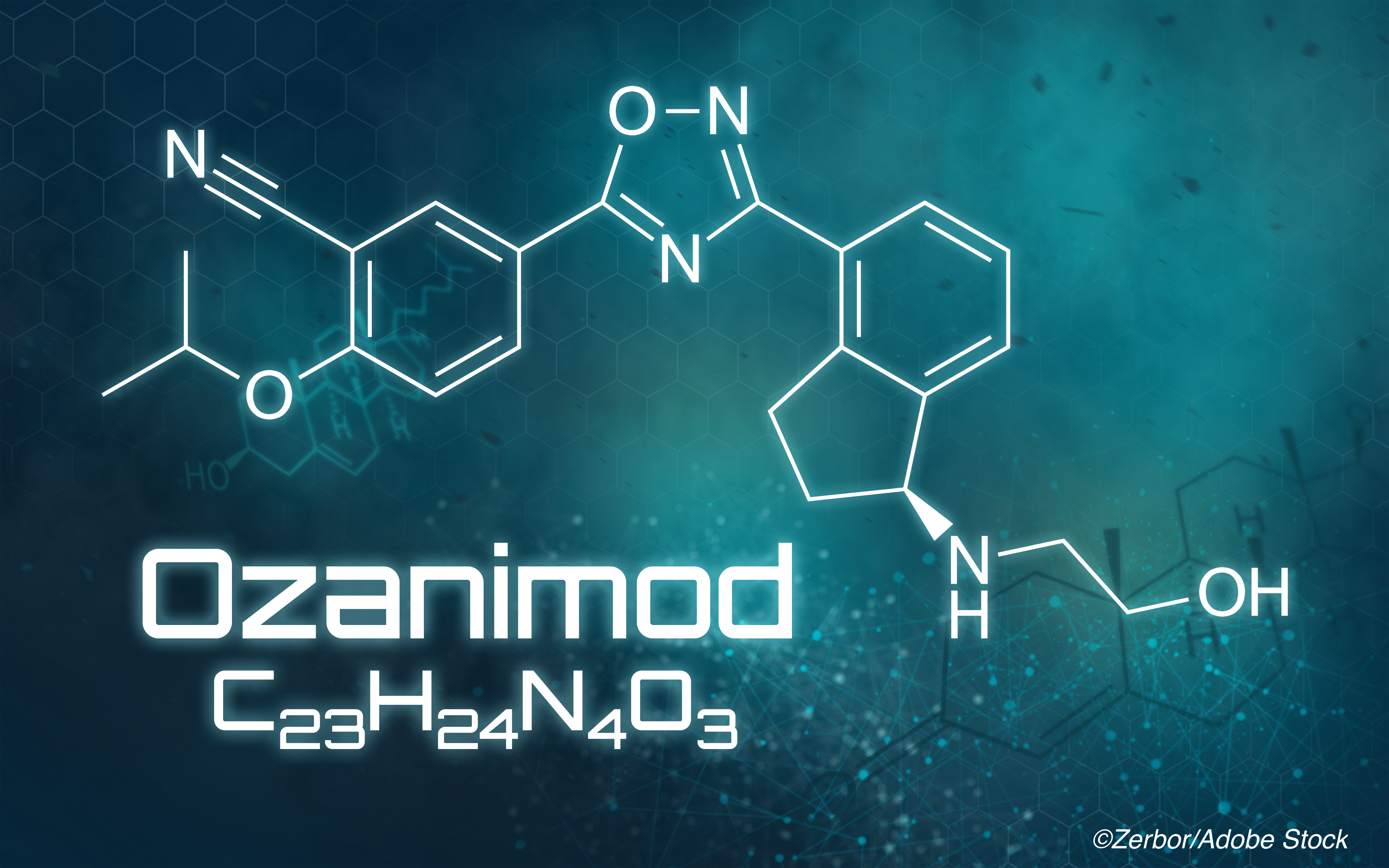Women with relapsing multiple sclerosis (RMS) who became pregnant while undergoing treatment with ozanimod—an oral sphingosine 1-phosphate (S1P) receptor modulator—do not appear to have any greater than normal risk of fetal abnormalities or other adverse pregnancy outcomes, researchers reported at the 2021 virtual meeting of the American Academy of Neurology.
During the period from December 2019 through August 2020, Neil Minton, MD, therapeutic area lead, Bristol-Myers Squibb, San Diego, and colleagues reported on 42 pregnancies among 1,868 women who participated in the developmental trials with ozanimod, which was being studied for the treatment of RMS.
Of those 42 pregnancies, there were 27 live births, including 21 children who were delivered at term normally, and 3 who were pre-mature but were also normal, Minton reported.
One baby was diagnosed with neonatal icterus, another with late intrauterine growth retardation with subsequent normal progress over the first year, and one baby was found to have duplex kidney, a birth abnormality that occurs in about 1.8% of births, he reported.
Six early spontaneous abortions occurred, including one that was the loss of a twin. Nine women elected to terminate the pregnancies and one refused to consent to follow-up, the researchers reported.
“The incidence of spontaneous abortion in clinical trial participants exposed to ozanimod—about 14%—is at the lower end of the expected rate of early pregnancy loss in the general population, which ranges from 12% to 22%,” Minton reported in his poster presentation.
“While there has been limited clinical experience with ozanimod during pregnancy, and pregnancy should be avoided while taking and for three months after stopping ozanimod, to date there has been no increased risk of fetal abnormalities or other adverse pregnancy outcomes seen with exposure in early pregnancy,” Minton reported.
“When a woman with multiple sclerosis who is on these drugs comes to me and says that she wants to get pregnant, it is a discussion we have to have,” said Aseff Harel, MD, assistant professor of neurology, at Lenox Hill Hospital, Northwell Health, New York City, told BreakingMED.
In commenting on the study and its implications, Harel said, “Because this disease affects women of child-bearing age, this is a discussion we have all the time. We usually try to get women off medication before she becomes pregnant, although there is general feeling that copaxone may be safe during pregnancy.”
Depending on the risk of relapse, doctors try to get patients back on treatment as soon as possible after they have given birth.
“In this study,” Harel said, “they didn’t find any signal of harm here that seemed different from what happens in the general population. But there is a major caveat: This is a very small study and may not tell us everything we need to know. It tells us there is huge signal of harm, but we need more information. There is nothing in this study which would prompt us to change recommendations.”
Minton noted, “Nonclinical reproductive safety assessments with S1P modulators such as ozanimod in rats and rabbits have shown embryo-fetal toxicity, including embryo-fetal deaths and visceral malformations. The S1P receptor is involved in vascular formation during embryogenesis.
“Female clinical trial participants of childbearing potential are required to use effective contraception while receiving and up to three months after discontinuing ozanimod and to discontinue ozanimod if pregnancy is confirmed,” he wrote.
In another trial that looked at possible adverse effects of treatment with ozanimod, researchers suggested that liver abnormalities were uncommon with the agent.
“In phase III RMS trials, compared with interferonβ-1a, hepatic enzyme elevations at least three times the upper limit of normal or at least five times the upper limits of normal occurred infrequently with ozanimod 0.92 mg/d,” reported Giancarlo Comi, MD, Professor and chair of neurology and director of the Institute of Experimental Neurology at the Vita-Salute San Raffaele University, Milan, and colleagues.
“Few patients discontinued treatment due to hepatic treatment-emergent adverse events,” Comi reported in his poster presentation. “There were no cases of drug-induced liver injury attributed to ozanimod.”
Hepatic enzyme increases have been observed with other S1P modulators, he reported, and hence the researchers took a look at liver abnormalities in the SUNBEAM and RADIANCE trials that compared ozanimod with interferonβ-1a. Liver enzymes were assessed at baseline, months one and three, and every three months thereafter in the 24-month trials.
Comi reported that the incidence of liver enzyme three times the upper limit of normal occurred in 5.5% of 882 patients on ozanimod and in 3.1% of 879 patients on interferonβ-1a.
Enzyme elevations that were five times the upper limit of normal were observed in 1.6% of patients on ozanimod and 1.3% of patients treated with interferonβ-1a. More than 90% of the patients on either drug returned to normal levels of liver enzymes while they remained on treatment, Comi said.
In commenting on these findings, Harel noted, “At first, we were concerned about possible liver problems with these drugs, but it really hasn’t amounted to much. In our experience even when people have slightly elevated liver enzymes, they tend to normalize. Usually, if we see higher liver enzymes, we just check it again and follow it. Rarely do we take people off their medications.”
-
The risk to unborn children whose mothers are on ozanimob during pregnancy does not appear to be a danger, but the recommendations remain to avoid pregnancy while on treatment.
-
Elevated liver enzymes do not appear to be problematic in patients on ozanimod.
Edward Susman, Contributing Writer, BreakingMED™
Harel had no disclosures.
Minton is an employee of Bristol-Myers Squibb.
Comi disclosed relationships with Novartis, Sanofi Genzyme, Merck Serono SpA, Celgene Group, Almirall, and F. Hoffman-La Roche.
Cat ID: 167
Topic ID: 98,167,728,730,111,131,36,41,138,167


